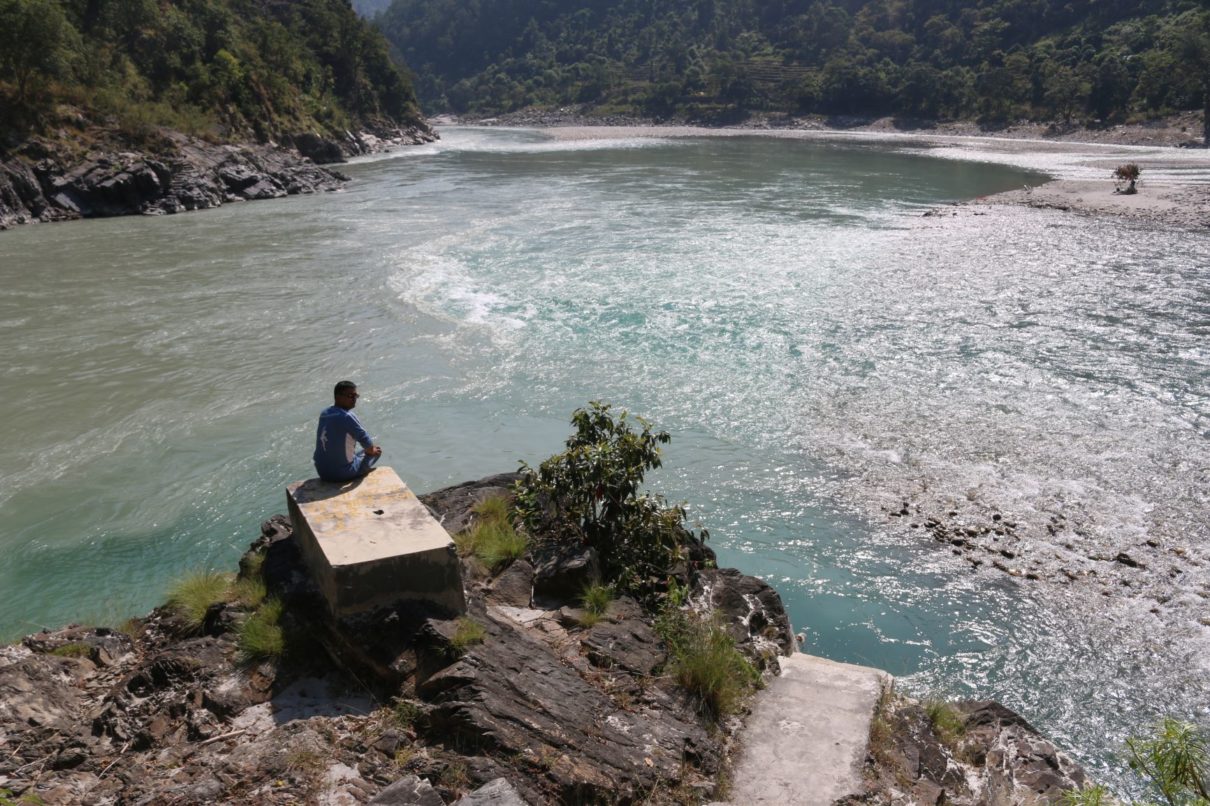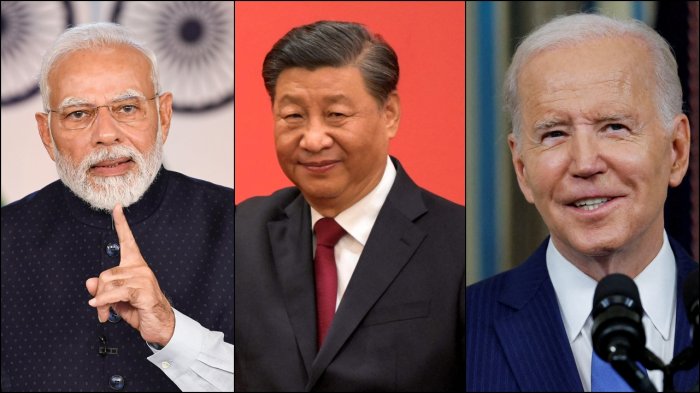The unaccounted costs of a self-focused mindset
Let’s start with a story. AZ Consulting Group is an organization that works toward improving management practices in client companies. Abhay and Nirav (names changed) are colleagues at AZ who manage the HR and IT teams. They worked closely to digitize human capital management for one of their clients to deal with talent and performance management challenges, skill development, and flexible work practices. While Abhay and Nirav tried to make life easier for their client, they sometimes had issues with each other. Abhay believed that Nirav was not great alone if Abhay didn’t provide him with the information about their client. At the same time, Nirav thought Abhay couldn’t do anything without his technological guidance. Abhay and Nirav were self-focused, and how they behaved toward each other hurt their relationship with the client company. Let us try to explore how. Abhay had worked with Pranay (name changed), who was the manager of the IT team before Nirav. They were part of a similar project, which was successful. Abhay could have shared the resources and insights from that project with Nirav, but he chose not to. Nirav eventually proposed an information management system to make HR-related information accessible to employees of their client company. Abhay saw some things that could have been improved in his proposal but didn’t insist on the necessary changes. The system Nirav proposed would make HR-related information accessible across every department without any boundaries whatsoever. Since the client company valued transparency and openness, Nirav thought his idea was outstanding no matter what Abhay thought. When Abhay and Nirav consulted the HR team and some key decision-makers, they seemed happy with the idea. However, neither Abhay nor Nirav made it a point to clarify to the clients that the employees could even access performance reports and feedback across all departments. When Abhay didn’t see Nirav bringing it up, he thought, ‘Well, why should I talk about it? It is his idea.’ The client company assumed there would be an inter-departmental flow of information on a generic level, with which they were encouraged to move forward. There was a massive backlash within two weeks of the system’s launch. Some employees had joined the client company a few months back and were a part of the biannual performance reviews. There was no harm in sharing the generic insights from their performance reviews with the other employees within and across their respective departments anonymously. Instead, the system showed every detail of the one/one interviews and performance feedback with disclosed identities. This incident created many problems in the client’s company. It triggered the new employees, and some old employees were on the verge of leaving the company because of the prevailing mistrust. When the client company’s managers consulted the AZ Consulting Group team, neither Abhay nor Nirav was ready to take responsibility for what had happened. Each one insisted on the role the other had to play in inviting the disaster for their client. Although the senior management at AZ intervened and was ready to make amends, the client eventually rolled back the project, and the companies never worked with each other again. Who was responsible for what happened? This incident dented AZ Consulting Group’s relationship with its client. We aren’t sure what happened to Abhay and Nirav in the aftermath but you might be wondering whose fault it was. Maybe Abhay should have shared insights from previous projects to help Nirav identify the blind spots of their efforts much earlier. Maybe Nirav needed to be extra careful regarding the sensitivity of the system. He should have mindfully considered the loopholes of his idea before implementing it. The client could have been more inquiring about the approach before bringing everyone from their organization on board. Whose fault? Who was responsible for what happened? Was it Abhay, Nirav, or the client company? A self-focused mindset perpetuates a lack of accountability What do you think might have happened in the headquarters of the AZ Consulting Group after the incident? Abhay might have pointed fingers at Nirav and his team for whatever happened; for not considering his feedback. Nirav might have blamed Abhay for not supporting and guiding him well. There could be so many possibilities. But what harmed AZ Consulting Group’s relationship with its client? In a single phrase, the answer is—a self-focused mindset. Abhay and Nirav were self-focused from the very beginning of the collaboration. Each saw the other as an irrelevance to ignore and an obstacle to overcome. Each saw the other as an object—dismissing their needs, objectives, and concerns. It eventually meant bad news for the collaboration and their relationship with the client. Not even once did they think about how their behavior toward each other and the underlying (self-focused) mindset would impact the project. One of the many things that a self-focused mindset does to us is that it makes us unaccountable for our actions. It prevents us from seeing the impact we have on those around us. It prevents us from thinking about shared outcomes and goals. It blinds us from acknowledging the part we have to play in making things better or worse. Impact-focused mindset: The key to overcoming the costs of a self-focused mindset Had Abhay and Nirav shown openness and care toward each other and the collaboration, they might have worked better as a team. With an impact-focused mindset and accountability toward their actions, they might have been able to see each other as people, people with needs, objectives, and challenges similar to their own. Had they operated with an impact-focused mindset, we know it would be a completely different fate for both companies. Rather than taking corrective measures and making amends, even in the immediate aftermath of the mishap, Abhay and Nirav took things personally and didn’t accept their mistake. Eventually, it led them to compromise their integrity and cost them their client. We have no clue whether Abhay and Nirav stayed in AZ. What we know is that organizations and employees can readily become self-focused in such high-stakes situations. In this case, the client could have easily sued AZ and the rest would be a bitter history. When an organization audits its financial reports at the end of the year, it can often overlook one aspect—the unresolved conflicts resulting from the team members’ self-focused mindset. These unresolved conflicts are the most expensive yet unaccounted cost in a company’s balance sheet—a perspective we must be careful of if we are to live and lead impactfully. The author is the linchpin at My Emotions Matter, an education initiative that helps individuals and teams learn the mindset and skills of Emotional Intelligence. You can learn more at myemotionsmatter.com
Nepal should adopt a multi-alignment policy
While engaging in discourses on the foreign policy of Nepal in formal and informal forums, some new thoughts and somewhat ‘innovative’ ideas have emerged, influenced by the changing dynamics of global power politics. In a thought-provoking lecture titled ‘Safeguarding Nepal’s National Interest: Foreign Policy Choices in the Changing International Environment,’ under the Yadu Nath Khanal lecture series organized by the Ministry of Foreign Affairs, Former Foreign Secretary Madhu Raman Acharya on June 25 shared an interesting perspective. He recommended that Nepal should adopt a policy of ‘multi-alignment’ instead of strictly adhering to the traditional ‘non-alignment’ stance. Acknowledging the shifting dynamics of international politics, Acharya believes that Nepal can better safeguard its national interests by adopting a more flexible and pragmatic approach toward international relations. While internalizing the sensitivities of geo-strategic location, I have presented my perspective in this write-up in a way backing-up this thought of a seasoned diplomat and author of many books, including a famous one ‘'Nepal Worldview'’. Let us define non-alignment and multi-alignment first. Non-alignment is a policy stance where a country chooses not to align itself with any major power bloc or alliance. Non-aligned countries aim to maintain their independence, sovereignty, and neutrality by avoiding formal military alliances or entanglements in conflicts between major powers. Non-alignment was a policy of the Cold War era when non-aligned countries refrained from aligning themselves with the West-led NATO or the East-led Warsaw Pact. The dynamics of international relations have evolved since the Cold War, and the term ‘non-aligned’ may not have the same significance today as it did back then. Nepal is a non-aligned state that has protected its national sovereignty and territorial integrity in major geopolitical turbulences over the decades. Multi-alignment is a policy approach in which a country actively seeks to engage and maintain relations with multiple powers or regional blocs. Unlike non-alignment, multi-alignment does not imply complete neutrality or a lack of formal alliances. Instead, it emphasizes diversifying diplomatic, economic, and security ties with various countries or groups to safeguard national interests and increase strategic flexibility. By engaging with multiple actors, a multi-aligned country aims to leverage its relationships to maximize benefits, access resources, and pursue its goals effectively. This approach allows countries to navigate complex geopolitical environments and adapt to shifting power dynamics. Multi-alignment is new for Nepal, unlike its southern neighbor India, which has adopted it by terming it as a ‘multi-engagement’ policy. Should Nepal follow a multi-aligned policy then or just remain multi-engaged? Nepal has adhered to a non-aligned stance since the 1950s, primarily as a means to maintain its independence, sovereignty, and neutrality during the Cold War. During that period, many countries, particularly smaller nations, chose to remain neutral as a survival strategy and to avoid being drawn into the conflicts between the United States and the Soviet Union. Nepal's adoption of non-alignment allowed it to assert its own interests and avoid alignment with either of the power blocs. But the situation has changed since then. On the one hand, the Cold War is over, while on the other, there have been errors and blunders in the implementation of non-alignment. Despite deviations from the core principles of non-alignment in some cases, the fundamental principle of maintaining independence, sovereignty, and neutrality has so far remained the guiding force. Given the economic significance and influence of China and India in the region, Nepal must continue to engage with both countries to benefit from economic partnerships, trade opportunities, and infrastructure development. At the same time, maintaining relations with other countries, including the United States and other western powers, can bring additional benefits in terms of investment, and development assistance. A multi-aligned policy approach can offer Nepal strategic flexibility and the ability to navigate its complex geopolitical environment effectively. By engaging with multiple powers, Nepal can leverage its relationships to advance its national interests, access resources, and enhance its development prospects. This is no time to be a mere spectator of developments in our periphery and be submissive to any hegemon. It doesn’t mean that Nepal should immediately embrace the multi-aligned policy; at least we should start contemplating the pros and cons of multi-alignment. Unlike regional powers China and India, which have strategic goals to achieve globally, Nepal has to focus on its strength in the development process. It is important for Nepal to carefully assess its national priorities and conduct a comprehensive analysis of the potential benefits and risks associated with a multi-aligned approach. This includes considering the potential impact on its relationships with neighboring countries, managing any potential conflict of interest, and ensuring the protection of Nepal's sovereignty and independence. It is important to note that multi-alignment does not necessitate membership in specific security-related alliances such as the Indo-Pacific Strategy (IPS) of the US or the Global Security Initiative (GSI) of China. A multi-aligned state can out-rightly refuse to become a member of initiatives focused on security and military cooperation. However, Nepal has engaged or can still engage with specific programs or initiatives that are not security-related. For example, participation in the Millennium Challenge Corporation (MCC) of the US, the Belt and Road Initiative (BRI) of China and the Act East Policy (AEP) of India can offer opportunities for economic cooperation, infrastructure development, and regional connectivity without compromising Nepal’s national interest. When engaging with these programs, Nepal should carefully evaluate any conditions or terms attached to them and assess their implications for national interests and sovereignty. Understanding the geography and geopolitics of the region is crucial for Nepal to navigate new policy orientations. Nepal should forge partnerships and collaborations with various nations and global actors, regardless of their ideological or political orientations. Rather than being biased toward any specific country, government or ideology, multi-alignment allows Nepal to engage with diverse actors and explore different ideas, which can contribute to the formulation of a unique Nepali perspective on development. For peace, progress and prosperity of Nepal and the Nepalis, the Nepali state should recognize the importance of engaging with different powers and seeking their support in national endeavors.
White man’s burden, brahminism and racial superiority
Europe is regarded as the most literate, civilized, and developed continent in the universe. Sadly, this narrative is getting weaker, thanks to recent instances of inhuman behavior on the part of some Europeans, to say the least. Recently, the white supporters of Valencia racially abused the famous footballer, Vini Jr, by chanting monkey slogans against him. This is not the first time the footballer has faced racial discrimination on the pitch. Time and time again, Europe is showing hatred toward black players. Mario Balletoli, Samuel Eto, Drogba, and even Mollato players like Danie Alves have been the victims of racial discrimination in different European leagues. Why are the Europeans or the whites abusing black players? Is the ghost of racial superiority still haunting the whites? Quite long ago, Rudyard Kipling wrote the poem titled ‘White Man’s Burden’. Kipling, through his poem, has glorified the magnanimity of white skin. The poet’s sole motive was to show the whole world that the whites were born to civilize the non-whites. The whites also assumed that people outside Europe were barbaric, savage, irrational, and uncivilized. They have even designed fake narratives about the color ‘black’ and Africa. From the colonial era to date, the same racist mindset is at work, on the football stadium and beyond. Like White Man’s Burden, Brahmanism in South Asia has debased cultural practices that divide people into different castes and sub-castes. The castes determine the cultural and social values of people. For instance, people born into thread-wearing castes (high castes) get certain privileges, whereas the lower castes or the Sudras (Untouchables) have to face caste-based discrimination throughout their lives. People have even lost lives or faced torture over caste matters. Few years ago in Nepal, some ‘high-caste’ people killed Navaraj BK along with his five friends in west Rukum for BK’s attempt to marry a ‘high-caste’ girl. This caste superiority of the Hindus has started its journeys abroad. In particular, the Hindus of Nepal and India are showing casteist colors in Europe, America, and Australia by following in the footsteps of their ancestors’ ‘ill-conceived’ Brahmanism, which states that only the thread-wearing (Thagadhari) caste is rational and pure whereas other castes, especially the Sudars, are ‘impure and irrational’. The Dalits based abroad are finding it hard to get into relationships, get rooms, land jobs and attend social gatherings, mainly due to a casteist system and Brahmanism prevailing in Nepali and Indian diasporas. In its 2016 survey report, Equality Lab, a US-based NGO, stated that at least one in four Dalits in the USA has faced verbal or physical assault, and two out of every three said they have faced discrimination at work. A case in point: In early 2020, Prem Pariyar was almost at a breaking point over targeted harassment, discrimination, and exclusion by the dominant caste group’s students at his alma mater, the California State University in East Bay, the United States (Al-jazeera). Increasing cases of caste-based discrimination abroad show that the so-called Hindu high castes are taking caste supremacy with them out of the Indian subcontinent. This is a matter of serious concern for Dalit communities and people working for Dalits rights. Aware of the tendencies of the ‘high castes, the Seattle City Council recently passed laws against discrimination, becoming the first US city to ban caste discrimination and the first in the world to pass such a law outside South Asia. Both the White Man's burden and Brahmanism stand for superiority of certain races. The international civil society should work to prohibit these kinds of racist and discriminatory thoughts as part of global efforts to end discrimination of all sorts.
Is ‘left unity’ on the card?
There are no immediate threats to undo the current coalition government led by the CPN (Maoist Center). At least, that’s what Prime Minister Pushpa Kamal Dahal and his primary coalition partner, Sher Bahadur Deuba, of the Nepali Congress have been trying to convince the people. But if one considers the recent formation of the so-called socialist front of the Maoist party and fringe communist forces, talk about the government change made by some NC leaders, and the second-rung leaders of the NC and the UML exploring the possibility of collaboration, it is hard to buy into Prime Minister Dahal and NC President Deuba’s assurance of a stable government. Some leaders in the NC and the UML say that the two parties must come together for the guarantee of political stability for at least another general election. UML leader Gokul Banskota, who is close to the party chairman, KP Oli, has publicly stated that while there cannot be an electoral alliance between the two parties, the UML and NC can form a government to ensure political and economic stability in the country. The UML has historically been the main political rival of the NC, and there are many leaders in both the parties who believe that they should always remain apart. But there are plenty of reasons that could bring these two parties together. The main one being the arrests of and allegations against several UML and NC leaders in corruption cases, like the fake Bhutanese refugee scandal and the Lalita Niwas land grab case. The leaderships of both the NC and the UML are not pleased with the Home Ministry, led by the Maoist party, opening investigations into corruption cases involving high-profile individuals. NC President Deuba, a key partner in the ruling coalition, has so far remained silent regarding government change, but people close to him say that he is not pleased with the Dahal administration, particularly regarding the way the refugee scandal is being pursued by the Home Ministry. The UML is keen to enter serious negotiations with the NC for the formation of a new government without the Maoist Center. But NC leader Min Bahadur Bishwakarma says that the party is committed to keeping the coalition intact. On Sunday, UML Chairman Oli said that there has not been any substantial discussions regarding the formation of a new coalition because the NC was fearful. But, Deuba’s non-committal and his apparent willingness to play second fiddle to the Maoist party do not mean that he is playing the safe card. Talks about a broad alliance of left parties are also gaining momentum of late, and it could see both Dahal and Oli together again. It is worth noting here that though Dahal may be leading the current ruling coalition, his party came in third in the last year’s general elections, far behind the NC and UML—and that too despite forming an electoral alliance with the NC and other fringe parties. So, it is very much in the interest of Dahal and his party to form some sort of lasting alliance at the earliest in order to stay relevant. The evolving dynamics inside the NC has also prompted Dahal to find an alternative. The factions led by Gagan Kumar Thapa and Gururaj Ghimire in the NC are already saying that the NC should not forge an alliance with the Maoist party in the next general elections. Besides, Thapa has also been saying that the current ruling alliance could change if the government fails to deliver. These developments have made Prime Minister Dahal suspicious. He may be in favor of giving continuity to the current coalition, as he has been saying publicly, but he is also aware that his party cannot survive if it were to contest the next general elections on its own. In the previous two general elections, the Maoist Center had forged poll alliances with the UML and the NC respectively. For Prime Minister Dahal’s party, the only lifeline is making an alliance with other parties. So, it sees everything through the prism of election. Several leaders in the Maoist party are convinced that the NC is not committed to a long-term collaboration and that the party should start looking for an alternative. This means the party will align with the UML, if it has to. Already, four political parties have formed a socialist alliance, led by the Maoists, with a purpose of expanding it to the grassroots level. Dahal is also in talks with the leader of Maoist splinter groups to bring them back into the party. He is said to be in talks with former Maoists ideologue Baburam Bhattarai, now of the Nepal Samajbadi Party, to explore ways to unite. It is said that before talking with Oli, Dahal first wants to solidify his position by bringing all fringe communist parties under one umbrella. The meteoric rise of the Rastriya Swatantra Party has also alarmed the Maoists. If the RSP continues to ride the wave of popularity until the next general elections, it is not just the Maoists that could get an electoral thrashing, the NC and the UML could also lose their political base. This was evident in the by-elections held earlier this year. The formation of a left alliance will no doubt be welcomed by China. Over the past few years, China has been consistently advising Nepal’s left parties to come together. Beijing’s leadership will ask Prime Minister Dahal for the same when he visits China in September. Until now, Prime Minister Dahal has been shrugging off the talks about the breakup in the Maoist-NC coalition, but he has also not ruled out the possibility of leftist alliance. He said on Monday that the NC should not overreact to the talks about the formation of left unity, as it does not mean disunity in the current ruling coalition. But if Oli’s recent statement is to be believed, the Maoists and the UML could once again unite to form a large communist party, like they did in 2018 with the short-lived Nepal Communist Party (NCP). A few days back, Oli said that there must be a serious review as to why the NCP split. UML leader Amrit Kumar Bohara says there is a sizable communist voter numbers in the country, and their combined strength will not be known for as long as leftist parties in Nepal are scattered. Chairman of CPN (Unified Socialist) Madhav Kumar Nepal, also former leader of the UML, also believes that only a powerful communist party could bring social and economic changes in the country. Maoist lawmaker Madhav Sapkota says while there is no immediate chance of left parties uniting, efforts are definitely underway. He adds the parties are continuing the efforts after learning lessons from the past. Bishwakarma, the NC leader, says unification among communist parties is an agenda that has been discussed for a long time, and that his party will have no issue if the parties of similar ideologies come together. It will not upset the NC as long as it does not affect the current coalition, he adds.



















